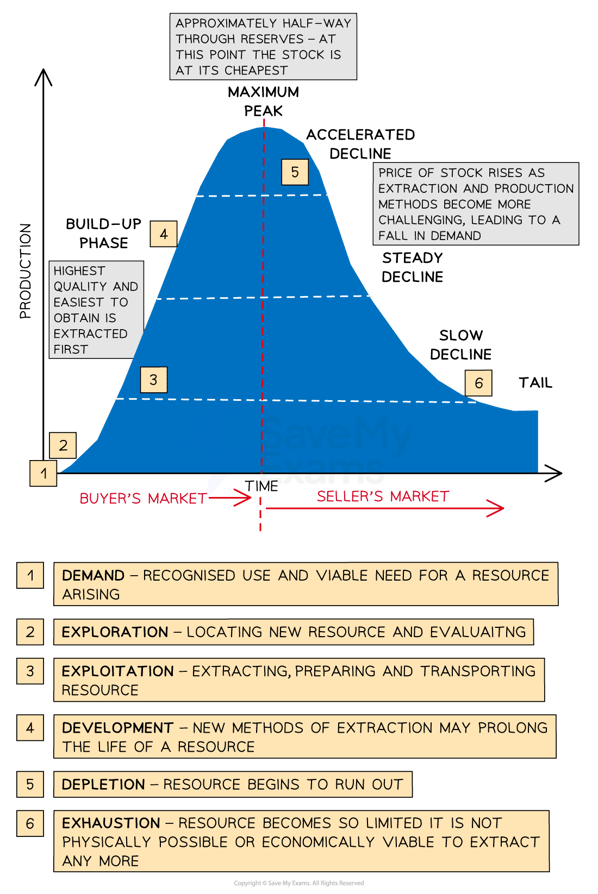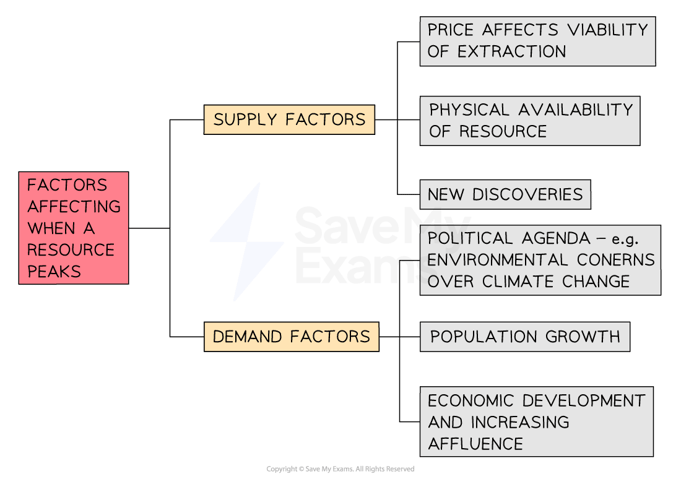Classifying Resources
- Resource security refers to the ability of a country to safeguard a reliable and sustainable flow of resources to maintain the living standards of the population
- A resource is something to which human society attaches value, due to its usefulness
- Resources can be classified according to common characteristics:
- Natural or human
- Renewable or non-renewable
- Recyclable or non-recyclable
- Biotic or abiotic
- Stock resources are finite and non-renewable
- E.g. coal, oil, gas, gold, copper, uranium
- Flow resources are renewed within short timescales either through physical systems or biotic reproduction
- E.g. solar, wind, forests, fish stocks
- Critical flow resources, such as forests and fish stocks, require careful management to ensure continuous availability
- Further classification of stock resources can be made
- Resources are an estimate of the quantity of all deposits of a valued mineral or energy source, including those that are discovered, undiscovered or not viable
- Reserves are those parts of the ‘resources’ that can be economically, technically and legally extracted
- A McKelvey box illustrates an international scale for evaluating stock resources

McKelvey box evaluating stock resources
Explanation of McKelvey Classification of Stock Resources
|
Proven |
Probable |
Possible |
Possible or hypothetical and conditional reserves |
|
|
Definition |
Quantity and quality of resources estimated with a high level of confidence. Viewed as being economically viable |
Quantity and quality of resources estimated with a level of confidence sufficient to allow further evaluation of their economic viability |
Quantity and quality of resources estimated based on limited evidence. There may be issues regarding depth, continuity and access |
Largely undiscovered and confidence in existence is low. Based on geological knowledge of similar situations where resources have already been discovered |
|
Quantity and quality of resource |
Size is known accurately |
Size partly measured and measurements used to estimate the extent |
Identified but estimated and not measured |
They are thought to exist but haven’t been sampled |
|
Degree of mineral sampling confidence |
90% or greater |
50% or greater |
10% or greater |
Insignificant |
Exam Tip
Be sure that you are able to contrast the different types of resources as classified here. Practise 4 mark questions by picking two different types of resource (e.g. stock and flow or inferred and measured) and make four statements about how they are different.



